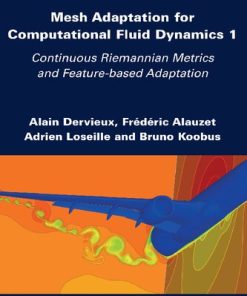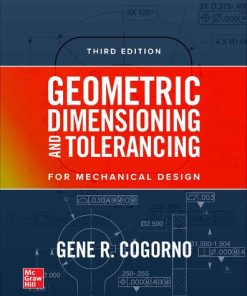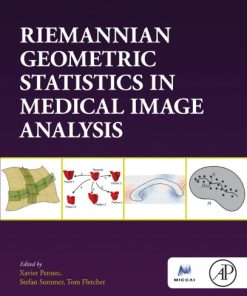Geometric and Topological Mesh Feature Extraction for 3D Shape Analysis Hetroy-Wheeler 9781119681045 1786300419
$50.00 Original price was: $50.00.$25.00Current price is: $25.00.
Geometric and Topological Mesh Feature Extraction for 3D Shape Analysis Hetroy-Wheeler – Ebook Instant Download/Delivery ISBN(s): 9781119681045,1119681049
Product details:
- ISBN 10: 1786300419
- ISBN 13: 9781119681045
- Author: Jean-Luc Mari, Franck Hétroy-Wheeler, Gérard Subsol
Three-dimensional surface meshes are the most common discrete representation of the exterior of a virtual shape. Extracting relevant geometric or topological features from them can simplify the way objects are looked at, help with their recognition, and facilitate description and categorization according to specific criteria. This book adopts the point of view of discrete mathematics, the aim of which is to propose discrete counterparts to concepts mathematically defined in continuous terms. It explains how standard geometric and topological notions of surfaces can be calculated and computed on a 3D surface mesh, as well as their use for shape analysis. Several applications are also detailed, demonstrating that each of them requires specific adjustments to fit with generic approaches. The book is intended not only for students, researchers and engineers in computer science and shape analysis, but also numerical geologists, anthropologists, biologists and other scientists looking for practical solutions to their shape analysis, understanding or recognition problems.
Table contents:
Chapter 1. Geometric Features based on Curvatures
1.1. Introduction
1.2. Some mathematical reminders of the differential geometry of surfaces
1.2.1. Fundamental forms and normal curvature
1.2.2. Principal curvatures and shape index
1.2.3. Principal directions and lines of curvature
1.2.4. Weingarten equations and shape operator
1.2.5. Practical computation of differential parameters
1.2.6. Euler’s theorem
1.2.7. Meusnier’s theorem
1.2.8. Local approximation of the surface
1.2.9. Focal surfaces
1.3. Computation of differential parameters on a discrete 3D mesh
1.3.1. Introduction
1.3.2. Some notations
1.3.3. Computing normal vectors
1.3.4. Locally fitting a parametric surface
1.3.5. Discrete differential geometry operators
1.3.6. Integrating 2D curvatures
1.3.7. Tensor of curvature: Taubin’s formula
1.3.8. Tensor of curvature based on the normal cycle theory
1.3.9. Integral estimators
1.3.10. Processing unstructured 3D point clouds 38
1.3.11. Discussion of the methods
1.4. Feature line extraction
1.4.1. Introduction
1.4.2. Lines of curvature
1.4.3. Crest/ridge lines
1.4.4. Feature lines based on homotopic thinning
1.5. Region-based approaches
5.1. Mesh segmentation
1.5.2. Shape description based on graphs
1.6. Conclusion
Chapter 2. Topological Features
2.1. Mathematical background
2.1.1. A topological view on surfaces
2.1.2. Algebraic topology
2.2. Computation of global topological features
2.2.1. Connected components and genus
2.2.2. Homology groups
2.3. Combining geometric and topological features
2.3.1. Persistent homology
2.3.2. Reeb graph and Morse–Smale complex
2.3.3. Homology generators
2.3.4. Measuring holes
2.4. Conclusion
Chapter 3. Applications
3.1. Introduction
3.2. Medicine: lines of curvature for polyp detection in virtual colonoscopy
3.3. Paleo-anthropology: crest/ridge lines for shape analysis of human fossils
3.4. Geology: extraction of fracture lines on virtual outcrops
3.5. Planetary science: detection of feature lines for the extraction of impact craters on asteroids and rocky planets
3.6. Botany: persistent homology to recover the branching structure of plants
People also search:
geometric topology arxiv
topological feature extraction
a geometric analysis of neural collapse with unconstrained features
a geometric analysis of phase retrieval
a geometric understanding of deep learning
You may also like…
Mathematics - Geometry and Topology
Computers - Computer Science
Uncategorized
Fiction - Women's Fiction
Technique - Food Manufacturing












